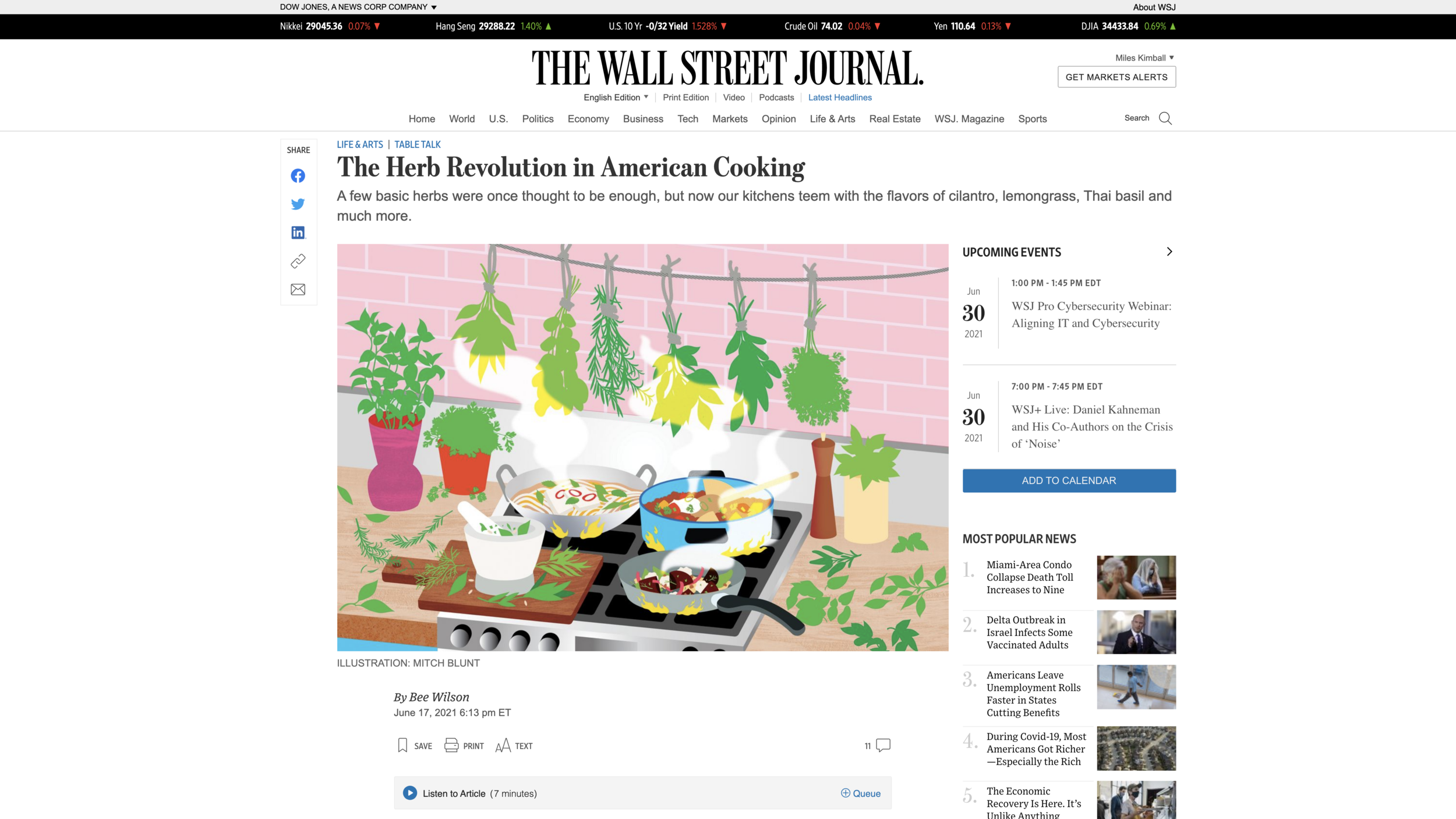In Praise of Herbs
For many people, salads seem healthy but boring. But they don’t have to be boring. My giant salad has evolved in many ways since I wrote “My Giant Salad.” Two of the best additions—when I have them—are sliced green onions and fresh basil.
Basil keeps good company with many other wonderful herbs. For example, fresh mint leaves can do a lot to jazz up almost anything. And Americans are ramping up the use of many other herbs. In “The Herb Revolution in American Cooking,” Bee Wilson describes many indications of the rise of herbs. First, use of herbs in typical American cooking used to be rudimentary:
In “Betty Crocker’s Picture Cook Book,” published in 1950, the anonymous author confidently pronounces that there are just “six simple herbs basic to all seasoning”: mint, thyme, sage, marjoram, rosemary and basil. Except for mint and basil, all of these are described as being good for stuffings and meat cookery, which reflects what a limited number of dishes herbs tended to be used in back then.
The author also grudgingly admits that bay leaves, chives, chervil, parsley and tarragon are useful “additional herbs.” But there is no mention at all of cilantro, which has grown in popularity along with Mexican immigration to the U.S. since then.
Now, variety of herbs has increased:
Along with the older Western stalwarts of parsley and chives, Americans are increasingly buying Thai basil and makrut lime leaves and fresh methi leaves (a grassy and pungent herb much used in Indian cooking).
Quantity for a given dish is often higher:
Now, under the influence of Middle Eastern cuisine, we are getting bolder still in our use of herbs and seeing that they can be used by the handful rather than the tablespoon. The Persian omelet, kuku sabzi, is so green that there are more herbs in it by volume than eggs.
And the total amount of herbs used is rising dramatically:
Most Americans are using far greater quantities of herbs—and different ones—than in the past. Sales of fresh herbs in the U.S. have tripled since 2000 from 1% of all fresh produce sales to 3%. Fresh herbs used to seem like a fancy luxury ingredient compared with an old-fashioned jar of dried oregano, but a survey in 2018 by Shenandoah Growers, a Virginia-based produce firm, suggested that more than half of all shoppers now regularly buy fresh herbs.
Sugar is the lazy way to make food taste good. Herbs and spices are a more creative way, that avoids the harm of sugar.
For annotated links to other posts on diet and health, see:
Here is the section for posts on sugar:
III. Sugar as a Slow Poison
Best Health Guide: 10 Surprising Changes When You Quit Sugar
Heidi Turner, Michael Schwartz and Kristen Domonell on How Bad Sugar Is
Michael Lowe and Heidi Mitchell: Is Getting ‘Hangry’ Actually a Thing?
The Better Side of Conventional Wisdom about Diet and Health
How Many Thousands of Americans Will the Sugar Lobby's Latest Victory Kill?
